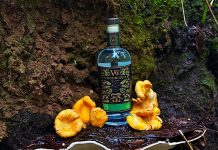Razor clam diggers are asked to use caution when digging to avoid crushing buried Dungeness crabs
OLYMPIA – Washington Department of Fish and Wildlife (WDFW) shellfish managers confirmed seven days of razor clam digs on coastal beaches beginning Dec. 12, with tentative dates scheduled from Jan. 1 through Feb. 1, 2025.
“These upcoming digs have some of the lowest tides of the winter season and should provide plenty of opportunity to gather razor clams for holiday meals and gifts,” said Bryce Blumenthal, a WDFW coastal shellfish biologist. “We’ve also received reports of people encountering buried Dungeness crab while digging during the Thanksgiving holiday weekend, and it’s possible there may be some around for this upcoming tide series.”
When Dungeness crabs are present, it is important for razor clam diggers to carefully look for “clam shows” – a dimple, doughnut, or keyhole indentation, roughly the size of a quarter – and gently insert clam tubes or shovels into the sand to avoid potentially crushing a crab. It isn’t uncommon to encounter an egg-bearing female Dungeness crab buried in the sand. The intertidal razor clam beds are located on the edge of the crab’s habitat. While rarely seen in large numbers these types of events are usually short lived, and the crab will relocate as tide and swell patterns change.
Not all coastal beaches are open for every dig, so diggers are encouraged to make sure their intended destination is open before heading out. No digging is allowed before noon during digs when low tide occurs in the afternoon or evening. Most successful digging occurs between one and two hours before the listed time of low tide.
The following digs during evening (p.m.) low tides will proceed as scheduled, after marine toxin results from the Washington Department of Health (DOH) showed razor clams are safe to eat:
- Dec 12, Thursday, 4:00 p.m.; -0.5 feet; Long Beach, Twin Harbors, Copalis
- Dec 13, Friday, 4:50 p.m.; -1.2 feet; Long Beach, Twin Harbors, Mocrocks
- Dec 14, Saturday, 5:36 p.m.; -1.6 feet; Long Beach, Twin Harbors, Mocrocks
- Dec 15, Sunday, 6:21 p.m.; -1.6 feet; Long Beach, Twin Harbors, Copalis
- Dec 16, Monday, 7:05 p.m.; -1.5 feet; Long Beach, Twin Harbors, Copalis
- Dec 17, Tuesday, 7:48 p.m.; -1.1 feet; Long Beach, Twin Harbors, Mocrocks
- Dec 18, Wednesday, 8:31 p.m.; -0.5 feet; Long Beach, Twin Harbors, Mocrocks
Below are additional tentative dates:
- Dec 28, Saturday, 4:58 p.m.; 0.0 feet; Long Beach, Twin Harbors, Copalis
- Dec 29, Sunday, 5:36 p.m.; -0.4 feet; Long Beach, Twin Harbors, Mocrocks
- Dec 30, Monday, 6:14 p.m.; -0.7 feet; Long Beach, Twin Harbors, Mocrocks
- Dec 31, Tuesday, 6:51 p.m.; -1.0 feet; Long Beach, Twin Harbors, Copalis
- Jan 1, Wednesday, 7:29 p.m.; -1.0 feet; Long Beach, Twin Harbors, Copalis
- Jan 2, Thursday, 8:08 p.m.; -0.8 feet; Long Beach, Twin Harbors, Mocrocks
- Jan 3, Friday, 8:48 p.m.; -0.3 feet; Long Beach, Twin Harbors, Mocrocks
- Jan 10, Friday, 3:47 p.m.; -0.3 feet; Long Beach, Twin Harbors, Mocrocks
- Jan 11, Saturday, 4:39 p.m.; -0.8 feet; Long Beach, Twin Harbors, Mocrocks
- Jan 12, Sunday, 5:27 p.m.; -1.0 feet; Long Beach, Twin Harbors, Copalis
- Jan 13, Monday, 6:10 p.m.; -1.1 feet; Long Beach, Twin Harbors, Copalis
- Jan 14, Tuesday, 6:50 p.m.; -0.9 feet; Long Beach, Twin Harbors, Mocrocks
- Jan 15, Wednesday, 7:28 p.m.; -0.6 feet; Long Beach, Twin Harbors, Mocrocks
- Jan 16, Thursday, 8:03 p.m.; -0.2 feet; Long Beach, Twin Harbors, Copalis
- Jan 26, Sunday, 4:34 p.m.; 0.1 feet; Long Beach, Twin Harbors, Mocrocks
- Jan 27, Monday, 5:15 p.m.; -0.4 feet; Long Beach, Twin Harbors, Mocrocks
- Jan 28, Tuesday, 5:54 p.m.; -0.8 feet; Long Beach, Twin Harbors, Copalis
- Jan 29, Wednesday, 6:31 p.m.; -1.0 feet; Long Beach, Twin Harbors, Copalis
- Jan 30, Thursday, 7:07 p.m.; -1.0 feet; Long Beach, Twin Harbors, Mocrocks
- Jan 31, Friday, 7:44 p.m.; -0.7 feet; Long Beach, Twin Harbors, Mocrocks
- Feb 1, Saturday, 8:21 p.m.; -0.1 feet; Long Beach, Twin Harbors, Copalis
The DOH requires test samples for marine toxins, and domoic acid levels must fall under the guideline level before a beach can open for digging. Domoic acid, a natural toxin produced by certain types of marine algae, can be harmful or fatal if consumed in sufficient quantities. Final approval usually occurs about a week or less before the start of each digging series. More information about domoic acid, as well as current levels at ocean beaches, can be found on the WDFW’s domoic acid webpage.
On all open beaches, the daily limit is 15 clams per person. Each digger’s clams must be kept in a separate container, and all diggers must keep the first 15 clams they dig, regardless of size or condition, to prevent waste.
All diggers age 15 or older must have an applicable fishing license to harvest razor clams on any beach. Licenses can be purchased from WDFW’s licensing website, and from hundreds of license vendors around the state. WDFW recommends buying your license before visiting coastal beach communities.
The 2024-25 Razor Clam Management Plan is available on the WDFW’s website. For more information, go to the WDFW’s razor clam webpage.
The Washington Department of Fish and Wildlife works to preserve, protect, and perpetuate fish, wildlife and ecosystems while providing sustainable fish and wildlife recreational and commercial opportunities.


















































